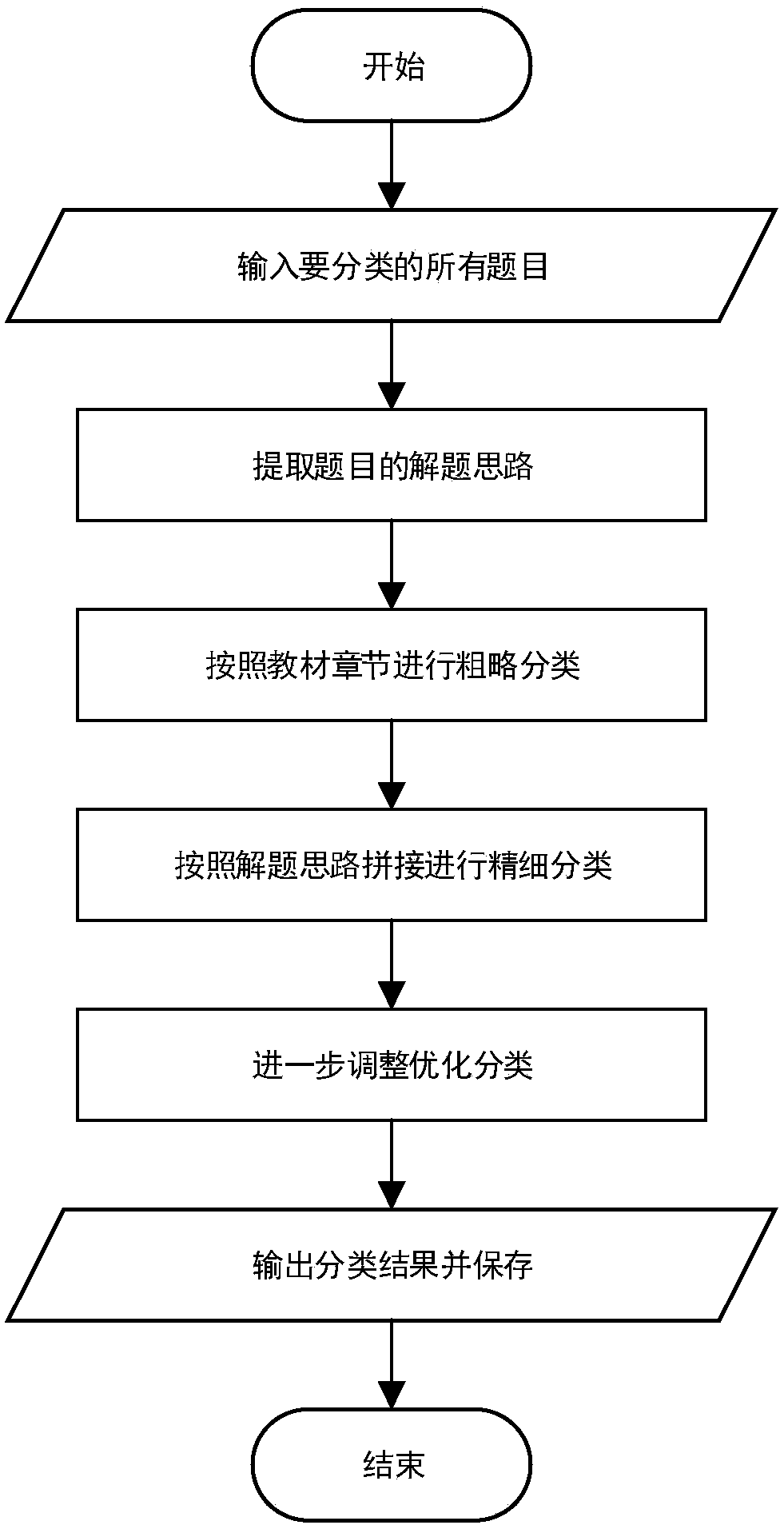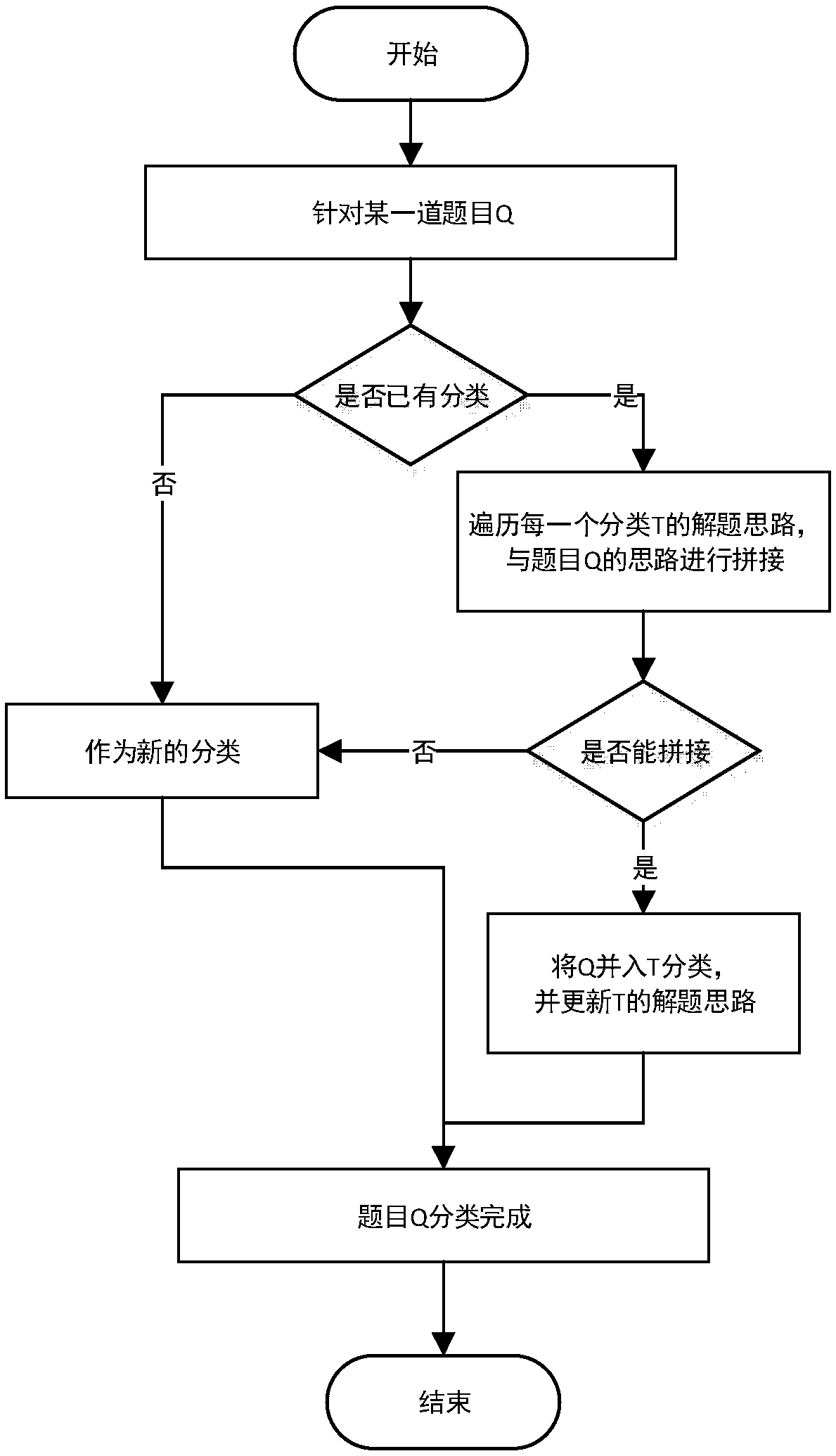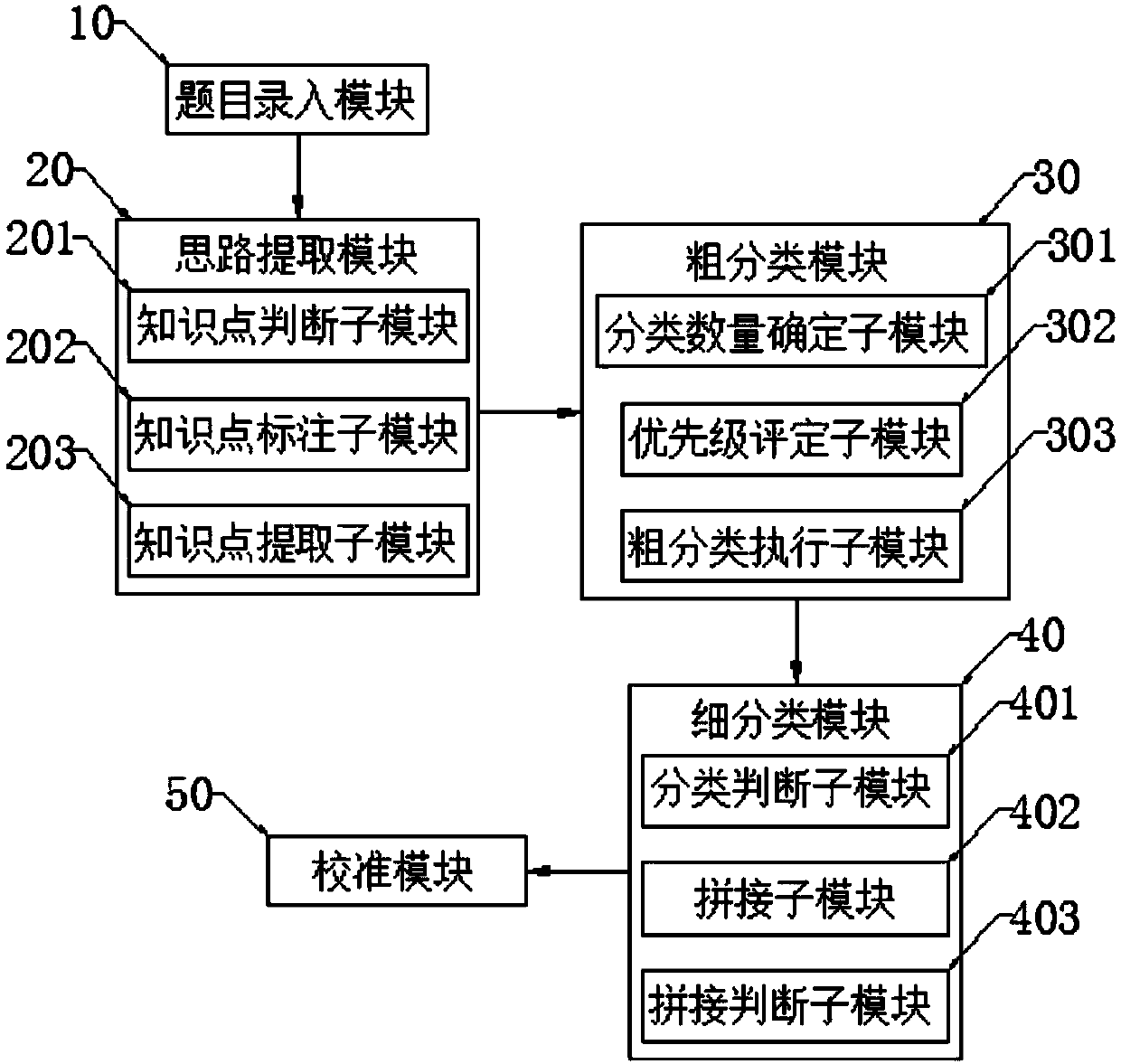Question type automatic sorting method and system based on elementary mathematics-oriented question-solving idea
A technology of automatic classification and elementary mathematics, applied in the field of mathematical calculation, it can solve problems such as high requirements for mathematical foundation, imprecise classification, affecting operation, etc., to speed up the classification process, simplify the classification process, and improve the accuracy.
- Summary
- Abstract
- Description
- Claims
- Application Information
AI Technical Summary
Problems solved by technology
Method used
Image
Examples
Embodiment 1
[0065] like figure 1 As shown, a method for automatic classification of question types based on problem-solving ideas for elementary mathematics includes the following steps:
[0066] a. Determine the topic to be classified and enter the topic;
[0067] b. Use the knowledge points used in the process of answering the standard answer of the input question as the problem-solving idea, and carry out the operation of extracting the problem-solving idea of the question;
[0068] c. Judge the priority according to the importance of the textbook chapters, and roughly classify the topics into multiple fixed-number categories according to the priority;
[0069] d. Carry out fine classification for each major category of topics, and splicing them into multiple subcategories with an indefinite number according to the problem-solving ideas;
[0070] e. After fine classification, calibrate the topics in the sub-categories, output and save the classification results.
[0071] Elementar...
Embodiment 2
[0074] In this embodiment, on the basis of Embodiment 1, the step b includes the following steps:
[0075] b1. Determine whether the standard answer of the input question is marked with knowledge points, if yes, use the marked knowledge points as the problem-solving idea of the question, and enter step b3; if not, enter step b2;
[0076] b2. Automatically mark the knowledge points on the standard answers of the input questions, and use the marked knowledge points as the problem-solving ideas for the questions;
[0077] b3. Extract multiple knowledge points in the topic to form a problem-solving idea.
[0078] This solution realizes the extraction of questions according to the problem-solving ideas, so that the final problem-solving ideas extracted for each question are a sequence composed of a set of knowledge points. If the standard answer of the question does not mark the knowledge points, it can be automatically marked according to the system. The knowledge points are us...
Embodiment 3
[0091] In this embodiment, on the basis of Embodiment 1, said step c includes the following steps:
[0092] c1. Determine the number of major categories to be divided;
[0093] c2. Prioritize the knowledge points according to the importance of the textbook chapters;
[0094] c3. According to the priority of the knowledge points, put the topics into the determined categories.
[0095] Preliminary rough classification of the extracted problem-solving ideas. Because the knowledge points involved in elementary mathematics can be divided into many small modules according to the arrangement of textbook chapters; The basics, so relatively speaking, the knowledge points in the following chapters are more important, and the priority of the knowledge points is higher. According to the priority of the modules and knowledge points, the topics to be classified are first divided into dozens of major categories, and usually the major categories The number is fixed; the rough classification...
PUM
 Login to View More
Login to View More Abstract
Description
Claims
Application Information
 Login to View More
Login to View More - R&D Engineer
- R&D Manager
- IP Professional
- Industry Leading Data Capabilities
- Powerful AI technology
- Patent DNA Extraction
Browse by: Latest US Patents, China's latest patents, Technical Efficacy Thesaurus, Application Domain, Technology Topic, Popular Technical Reports.
© 2024 PatSnap. All rights reserved.Legal|Privacy policy|Modern Slavery Act Transparency Statement|Sitemap|About US| Contact US: help@patsnap.com










